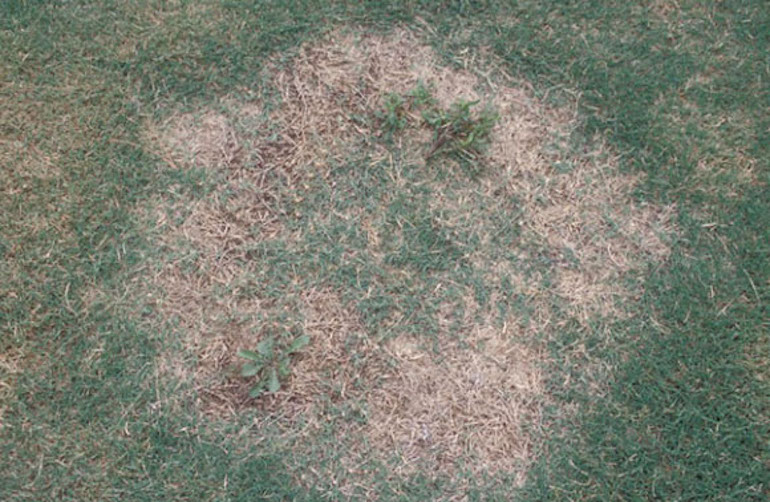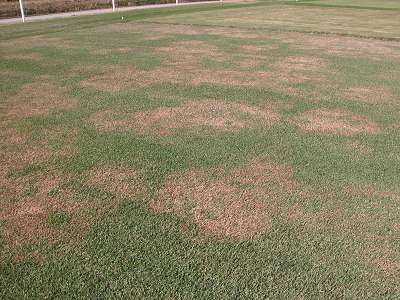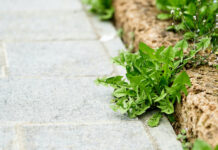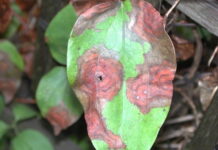
When it comes to warm-season grasses, spring quality is influenced more by what you do (or don’t do) the previous fall. Sending the turf into winter dormancy in a strong, healthy condition determines how well it survives the winter and greens up in the spring. Fall fungicide applications that protect against large patch and spring dead spot are an important part of this equation.
Spring dead spot often goes unrecognized or misdiagnosed in lawns and landscapes. Bermuda grasses are most susceptible to it, but zoysia grasses can be affected as well. Spring dead spot symptoms appear in the spring when the turf comes out of winter dormancy. Circular spots and patches up to several feet in diameter appear to remain dormant, but are actually completely dead. Recovery from spring dead spot is very slow and, in severe cases, it can take the entire growing season.

Large patch is another severe disease of warm-season grasses, with zoysia grasses, centipede grass, and St. Augustine grass being most susceptible. The disease develops in fall and spring when soil temperatures are below 70° F, and is particularly aggressive during extended periods of wet weather. Symptoms typically appear as circular patches of blighted turf up to several feet in diameter, but multiple patches can coalesce to kill large irregular areas. When large patch is actively developing, outer edges of the patches often have a bright red, orange, or yellow coloration.
Spring dead spot and large patch can be controlled with fungicide applications, with fall treatment providing the best results. Two applications on a 28-day interval are recommended for control, beginning in late summer to fall when soil temperatures are consistently below 70° F. This is typically between mid- to late-September and mid- to late-October for much of the transition zone. For more precise timing, you can monitor soil temperatures in your area by signing up for automated soil temperature alerts.
Syngenta Solutions
At Syngenta, Velista® or Headway® brand fungicides are recommended for effective control of spring dead spot and large patch. Velista can be applied as a broadcast spray at 0.5 to 0.7 oz./1,000 ft.2 Headway can be applied as a broadcast spray at 2.2 to 3 fl. oz./1,000 ft.2
If targeting spring dead spot, spray applications should be watered-in with at least 0.15” immediately after application before they dry on the turf foliage. For best results against large patch, products should be applied in 2 gallons H2O/1000 ft.2 and allowed to dry before rainfall or irrigation
Headway is also available in a granular formulation as Headway G (apply at 3.5 to 4 lb./ 1,000 ft.2). Headway G should be watered-in within 24 hours and offers additional flexibility and convenience compared to spray applications.
Always read and follow label instructions. Some fungicide products may not be registered for sale or use in all states or counties and/or may have state-specific use requirements. Please check with your local extension service to ensure registration and proper use.
Dr. Tredway is the technical services manager for Syngenta. This article appeared in the most recent GreenCast® Advisory from Syngenta.











![[VIDEO] Dickies®: Discover Workwear That’s Anything But Uniform](https://turfmagazine.com/wp-content/uploads/2023/06/1647663814-4b1a2a7742790a9b1e97a3b963477850192e1d6a9dfba9b07214a77bae25d6e3-d-218x150.jpg)






























![[VIDEO] Dickies®: Discover Workwear That’s Anything But Uniform](https://turfmagazine.com/wp-content/uploads/2023/06/1647663814-4b1a2a7742790a9b1e97a3b963477850192e1d6a9dfba9b07214a77bae25d6e3-d-324x160.jpg)